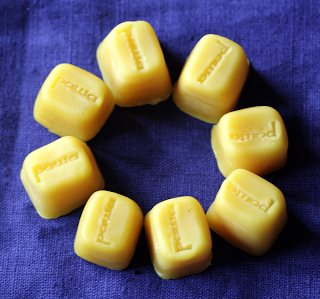I'm making good progress, but I'm still behind - at least that's how it feels to me. A few extra (and time-sensitive) things to do during the last days have sort of nudged me behind schedule; not far, but far enough that I get the queasy "Oh no I'm behind" feeling.
So... although there is some progress on the blue hairnet with pearls (which I'm hoping to finish today) and some more progress on the exhibition stuff and finally some more progress with the product line (though not all ready for telling yet), you only get this short text post today, and I'm off to write some more, net some more, weave some more, cut and edit the last videos (with short demonstration snippets of the textile techniques for the exhibition) and so on. And once the hairnet is really finished, you'll see a photo of it here, of course.
So... although there is some progress on the blue hairnet with pearls (which I'm hoping to finish today) and some more progress on the exhibition stuff and finally some more progress with the product line (though not all ready for telling yet), you only get this short text post today, and I'm off to write some more, net some more, weave some more, cut and edit the last videos (with short demonstration snippets of the textile techniques for the exhibition) and so on. And once the hairnet is really finished, you'll see a photo of it here, of course.






